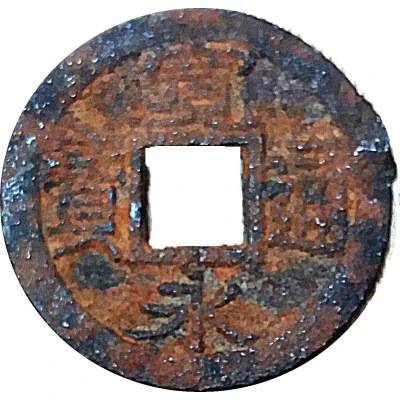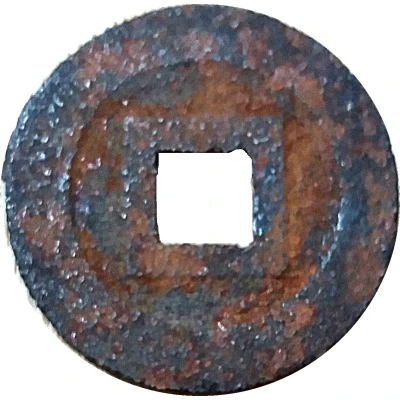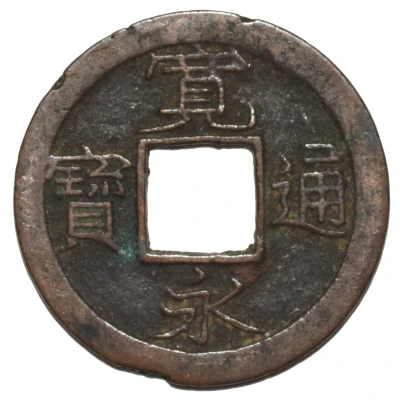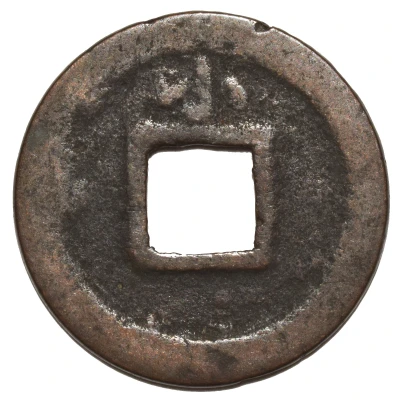


1 Mon "Kan'eitsūhō" Iron alloy; blank reverse ND
| Iron | 2.55 g | 23.0 mm |
| Issuer | Japan |
|---|---|
| Type | Standard circulation coin |
| Years | 1739-1859 |
| Value | 1 Mon |
| Currency | Mon (683-1953) |
| Composition | Iron |
| Weight | 2.55 g |
| Diameter | 23.0 mm |
| Thickness | 1.3 mm |
| Shape | Round with a square hole |
| Technique | Cast |
| Orientation | Medal alignment ↑↑ |
| Demonetized | Yes |
| Updated | 2024-10-05 |
| Numista | N#121452 |
|---|---|
| Rarity index | 46% |
Reverse
Blank, with rim and square center raised.
Edge
Plain
Comment
All iron Kan'eitsūhō coins are considered new type, even some variations of them have old style lettering (legs of "寶" connected as like ス).Interesting fact
One interesting fact about the 1 Mon "Kan'eitsūhō" coin from Japan is that it was made of iron, which was a common material for coins in Japan during the Edo period (1603-1867). The use of iron for coins was preferred because it was abundant, durable, and less expensive than other metals. The iron used for these coins was typically obtained from the Japanese countryside and was smelted in local furnaces. Despite being made of a relatively inexpensive material, the 1 Mon "Kan'eitsūhō" coin was still carefully crafted and features a distinctive design, showcasing the craftsmanship and attention to detail of Japanese coin makers during this time period.

